Joint Pain
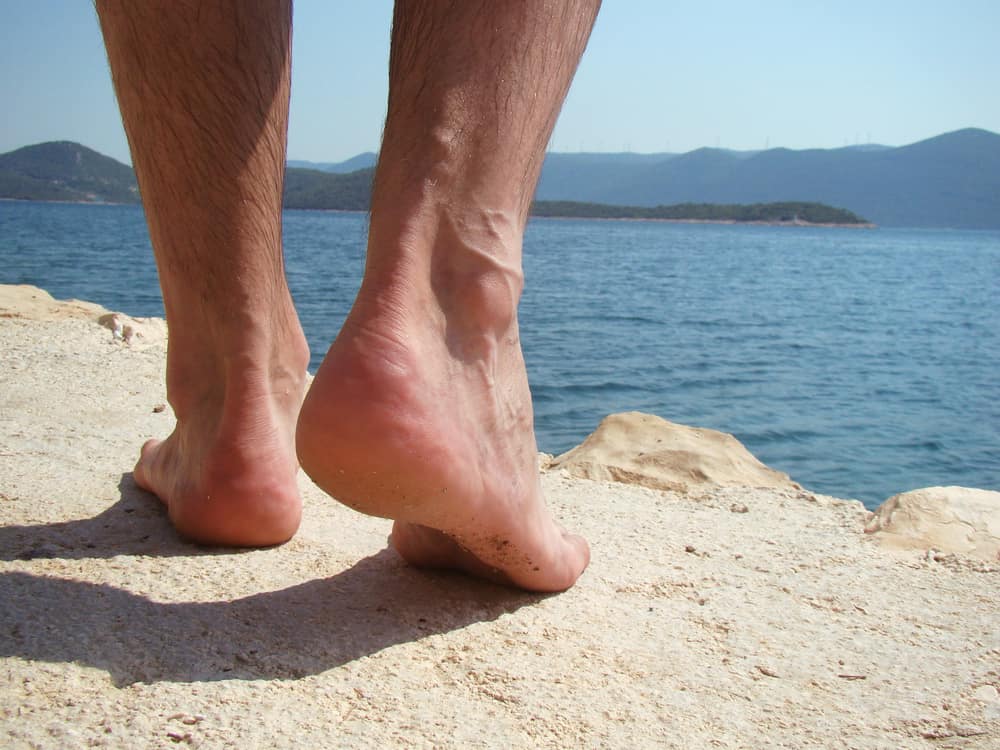
For more information on the podiatry treatments available for joint pain, please use the toggle switches below:
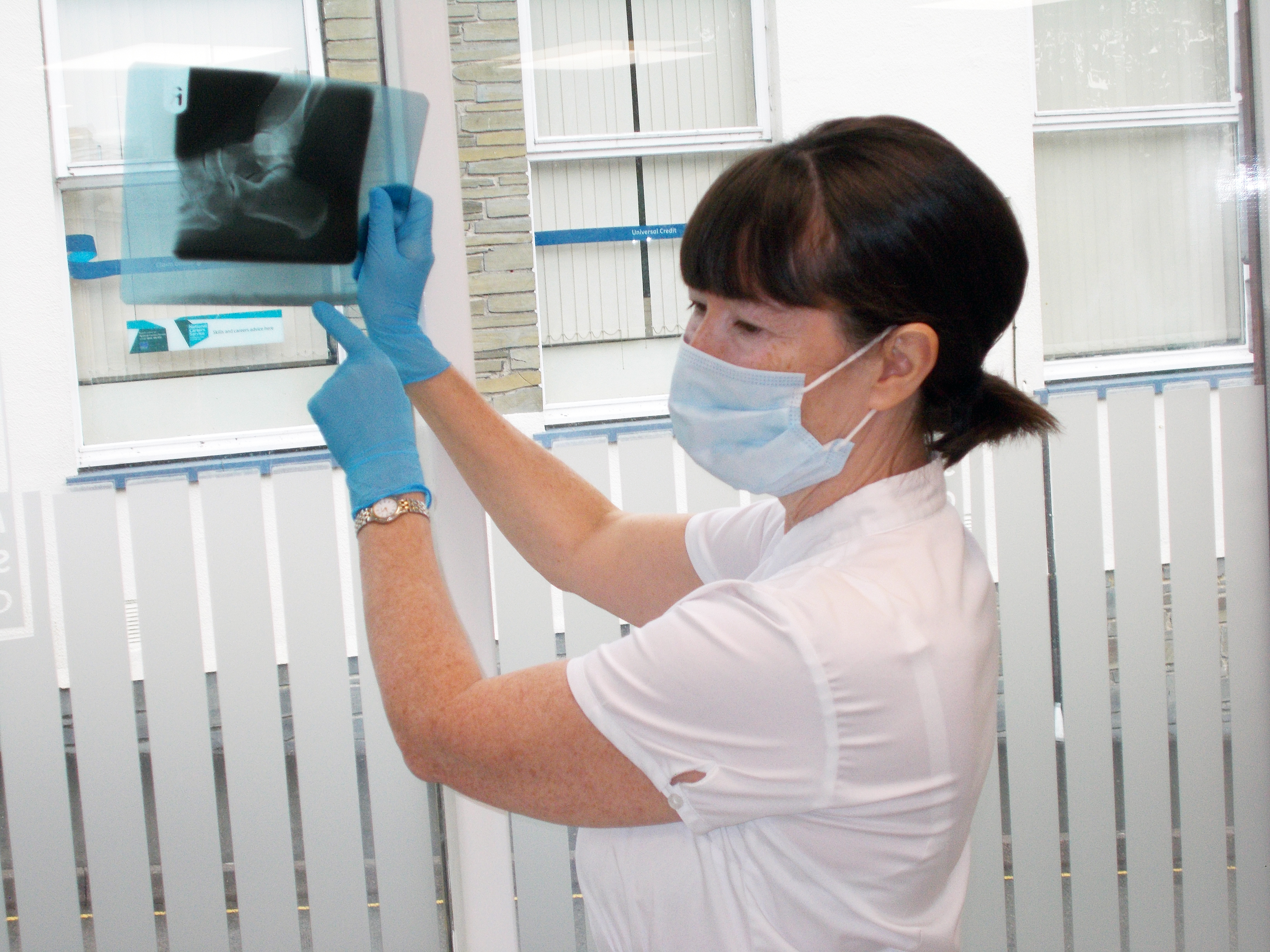
Rheumatoid Arthritis is a systemic auto immune disease affecting multiple joints throughout the body. Usually symptoms appear in several joints on both feet first and include pain, swelling, stiffness and muscle weakness. Bony changes can often lead to misalignment or partial dislocation of the joints. You may develop corns, bunions, claw toe or hammer toe.
The earlier it’s diagnosed, the more effective your treatment. Don’t ignore joint pain, as Rheumatoid Arthritis often shows up in the feet first.
Diagnosis is normally from clinical examination and medical history. The Podiatrist will discuss the best course of action to relieve the symptoms which may include referral for blood tests or X-rays. Primarily we treat this condition conservatively. This means the patient is less likely to suffer side effects of more invasive treatments. A biomechanical assessment may be necessary. This is used to fabricate custom made orthotics to relieve the pain by redistributing the pressure away from the joints.
LLLT is also effective in reducing the pain and inflammation and reducing the need for painkilling drugs. For those who have not had any success with less invasive methods, surgery may be recommended, the most successful option being fusion. This is when bones are fused resulting in a loss of movement in that particular joint which can reduce pain.
For more information click here
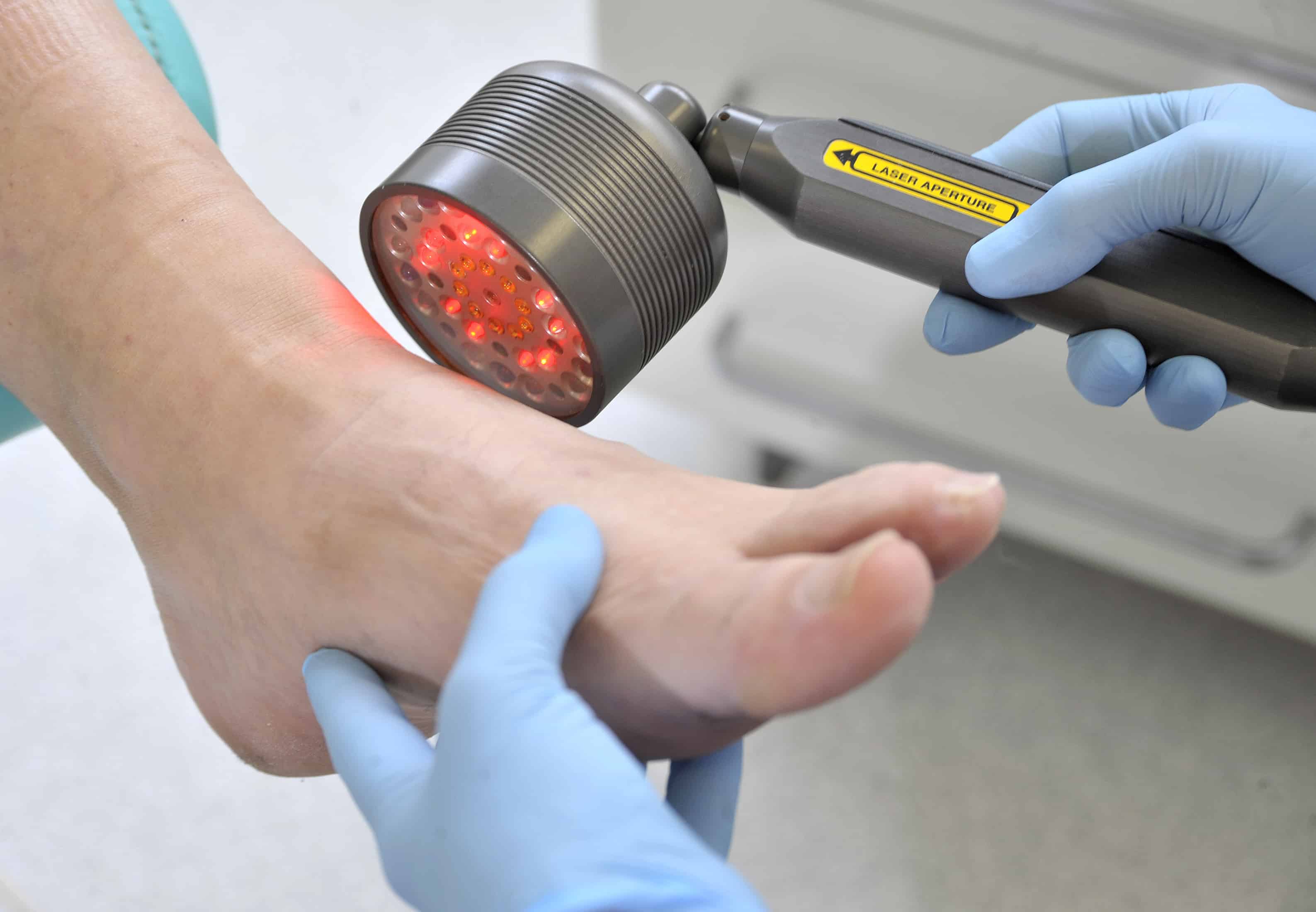
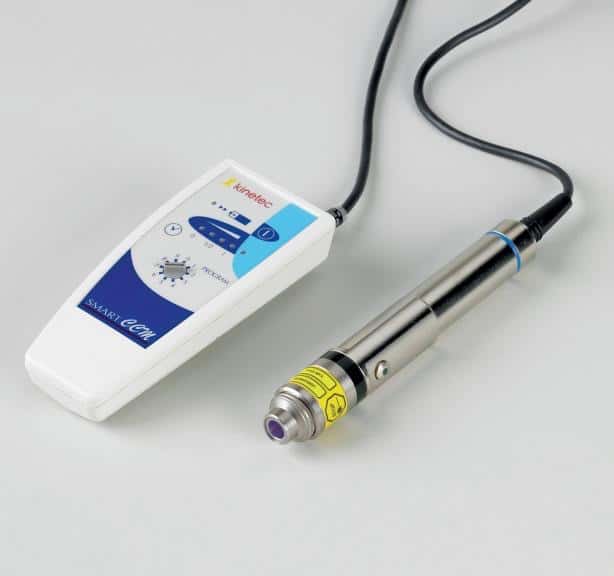
For those seeking a more natural approach to treating Arthritis, or simply want something complementary to assist with treatment, consider the health benefits of turmeric.
Many studies have showcased turmeric benefits, ranging from its antioxidant properties to elevating levels of BDNF, which is a growth hormone in your brain. Turmeric supplements contain bioactive compounds called ‘curcumin’ that has been used in studies for a wide variety of different clinical applications; one of the most effective of which is helping to treat arthritis.
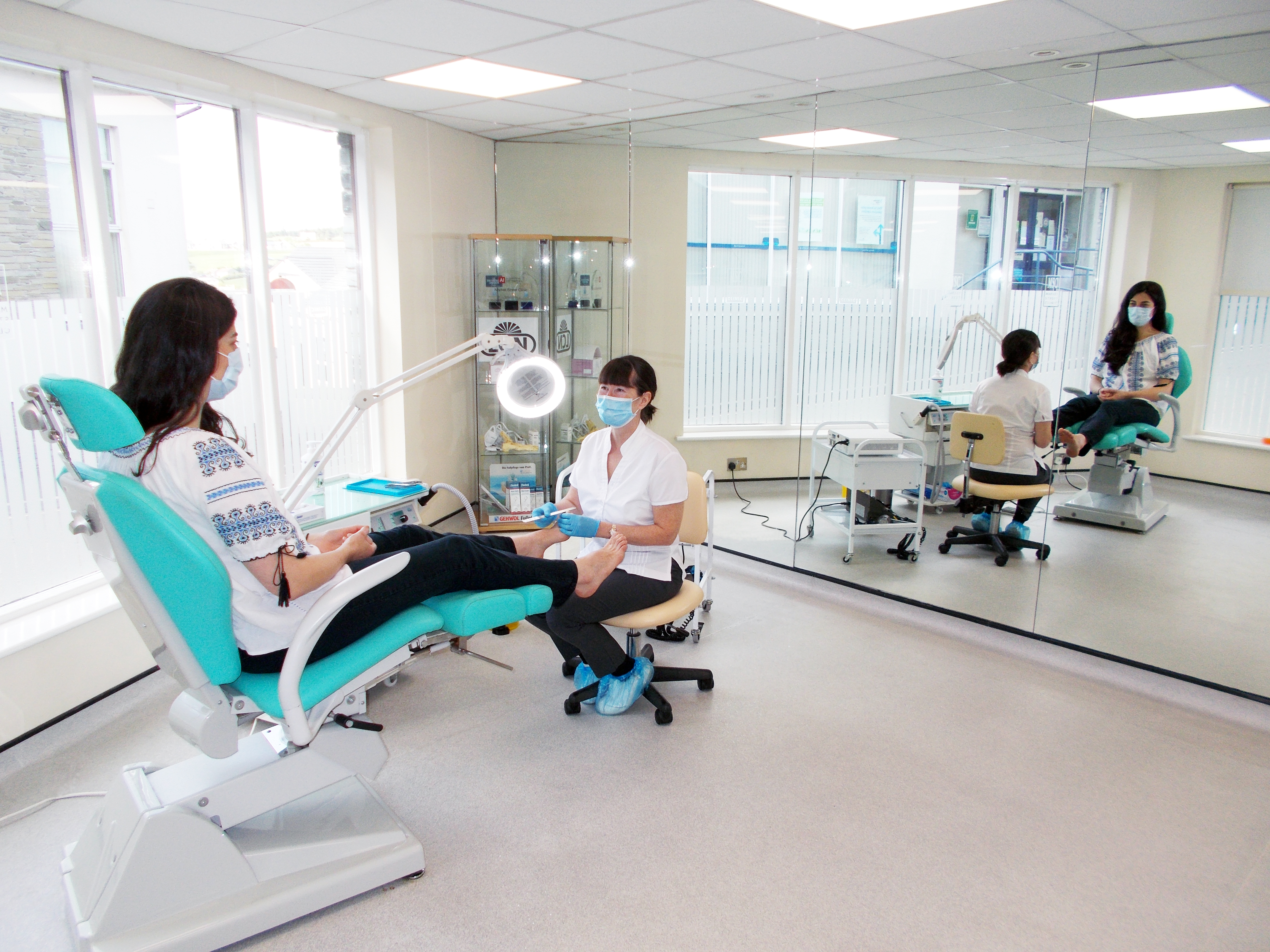
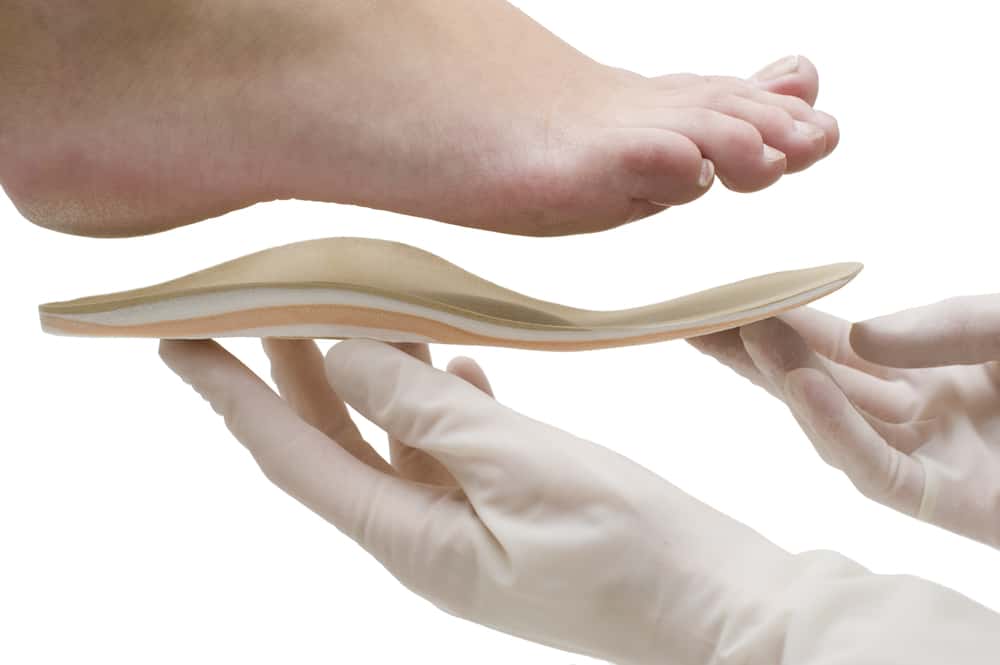
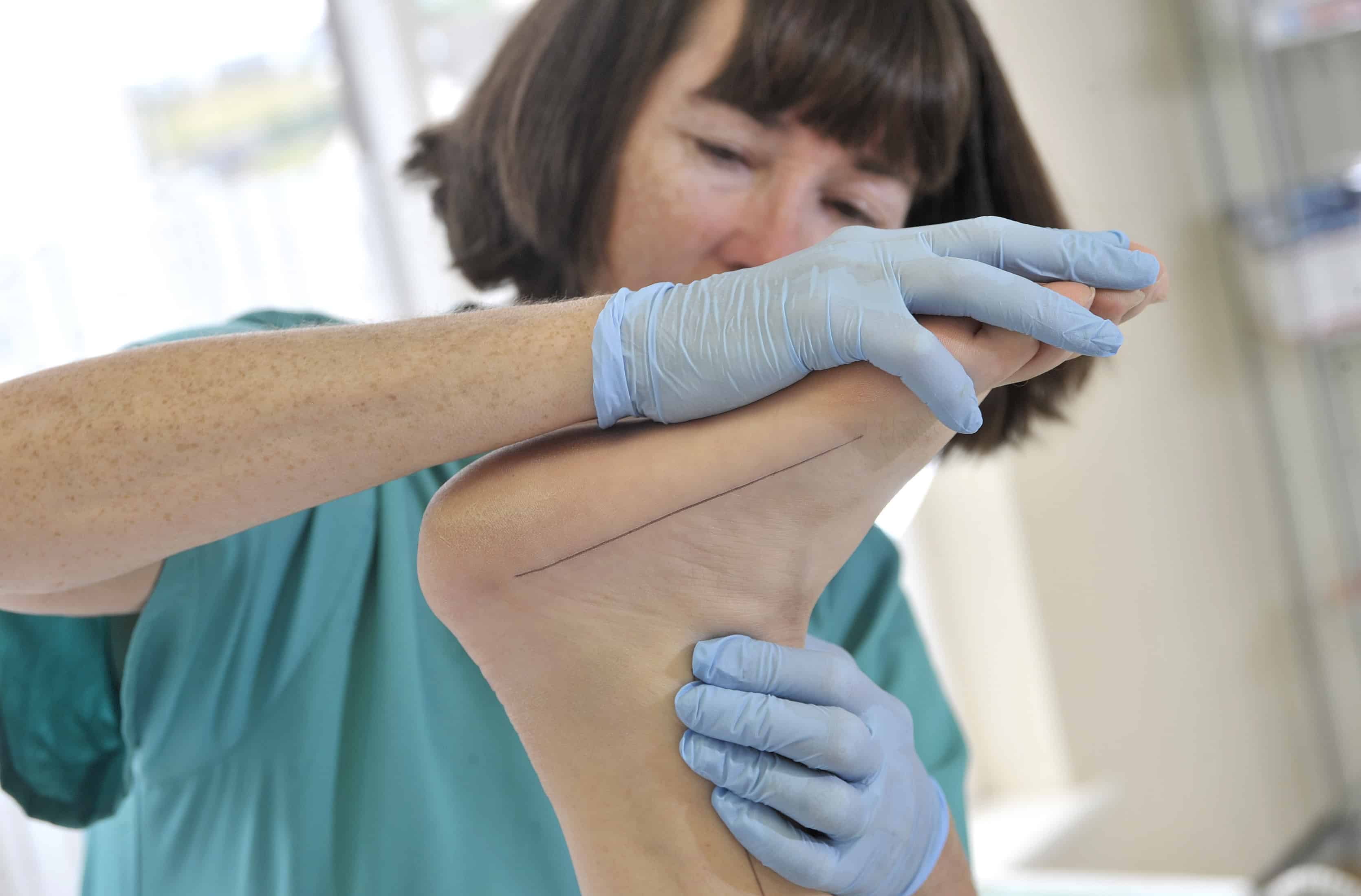
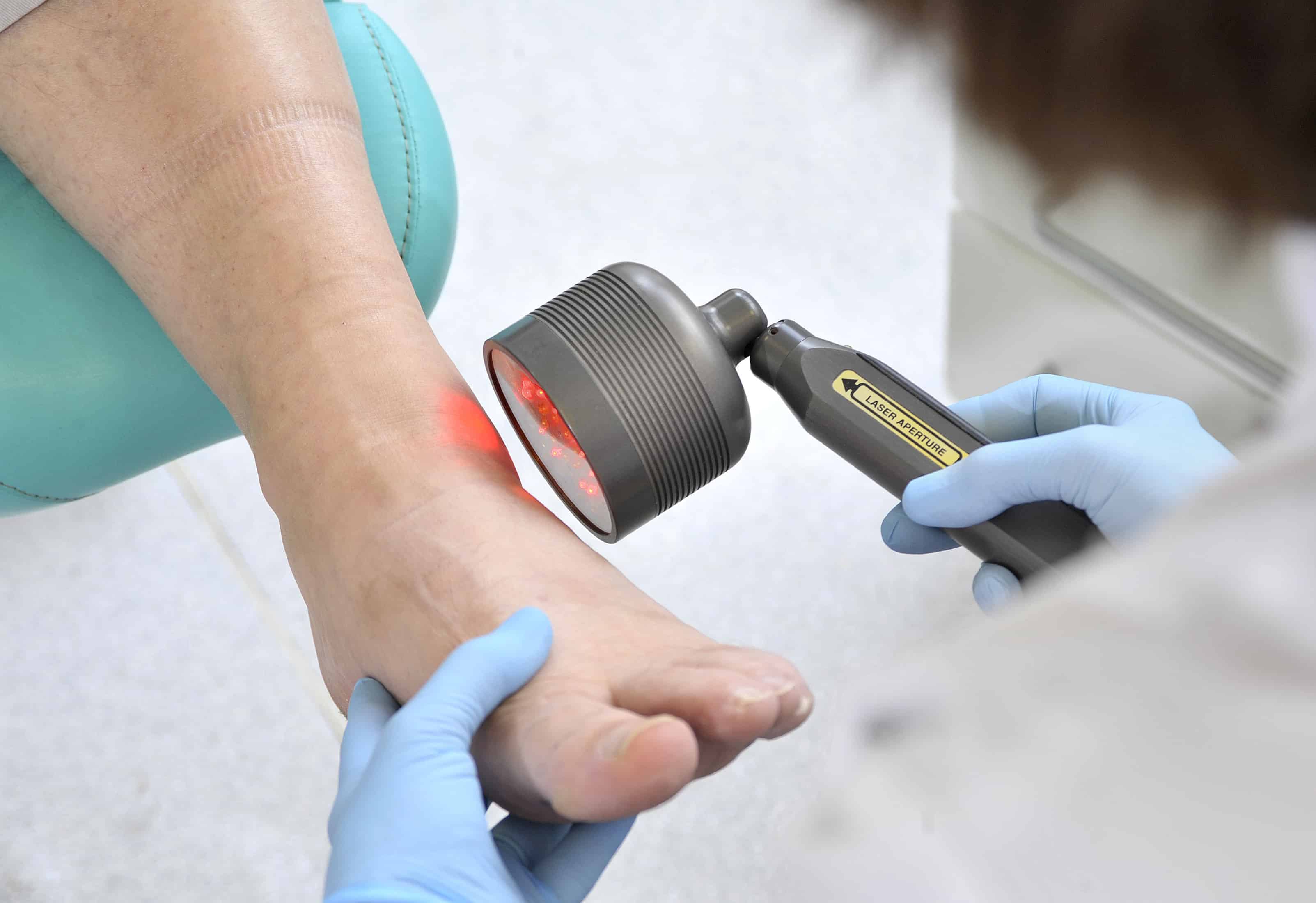
Commonly called the “wear-and-tear” arthritis, Osteoarthritis is a degeneration of the joint or joints. This usually involves swelling of the affected joint with restricted movement.
There is often associated pain and weakness. It can appear in any joint in the foot and is caused when the cartilage between bones has become worn and no longer cushions the joint as well as it used to.
Diagnosis is normally from clinical examination, with the use of x-rays. The Podiatrist will discuss the best course of action to relieve the symptoms.
Treatments include:-
Low Level Laser Therapy is very effective in reducing the pain and inflammation.
A biomechanical assessment may be necessary which is then used to fabricate custom made orthotics to relieve the pain by redistributing the pressure away from the joints.
None weight bearing exercise such as swimming or yoga has also been found to be helpful in relieving symptoms.
For those who have not had any success with less invasive methods, a cortisone injection or surgery may be recommended.
For more information click here
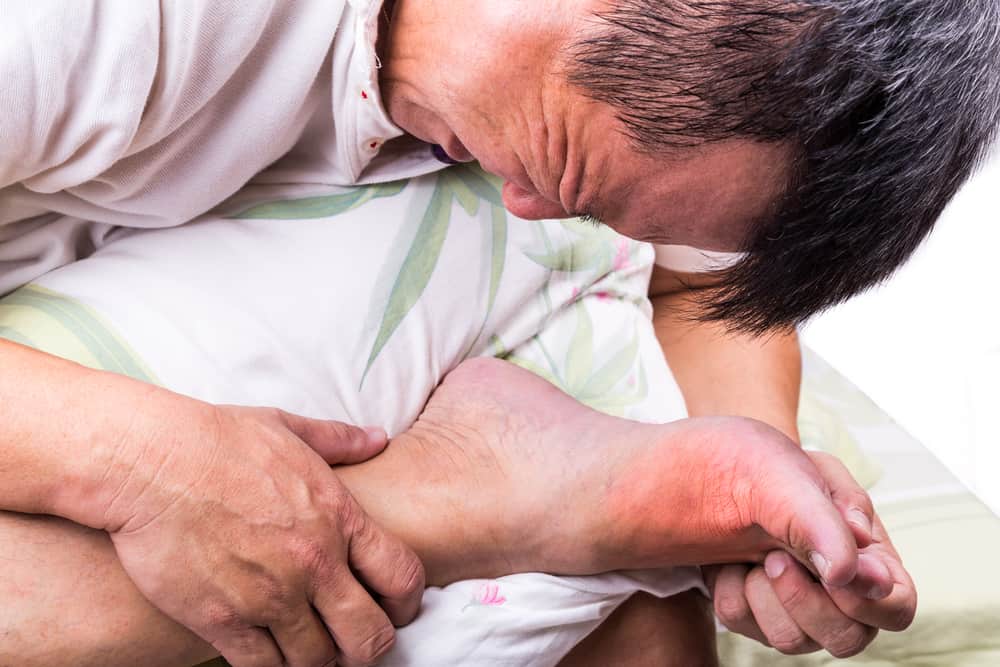
Gout is a condition caused by abnormally high levels of uric acid in the blood.
The large toe joint in the foot is commonly affected. Crystals accumulate around the joint causing acute inflammation and intense pain. The initial attack is usually the worst as the onset is sudden and often comes on at night.
Repeated attacks of gout can cause arthritis in the affected joints if left untreated.
symptoms:-
Sudden attack of severe pain in one or more joints.
Joint feeling hot and tender, unable to bear anything coming into contact with it.
Swelling.
Red shiny skin over affected joint.
Peeling, itching and flaking skin as swelling subsides.
Treatments:-
Take medication prescribed by your G.P. as soon as you notice an attack.
Rest and elevate the limb.
Keep the joint cool by applying ice packs for no more than 20 minutes keeping the ice pack wrapped in a towel, otherwise this can damage the skin.
Keep well hydrated, this will help flush out the crystals.
Low Level Laser Therapy has proven to be successful in treating gout in the early stages.
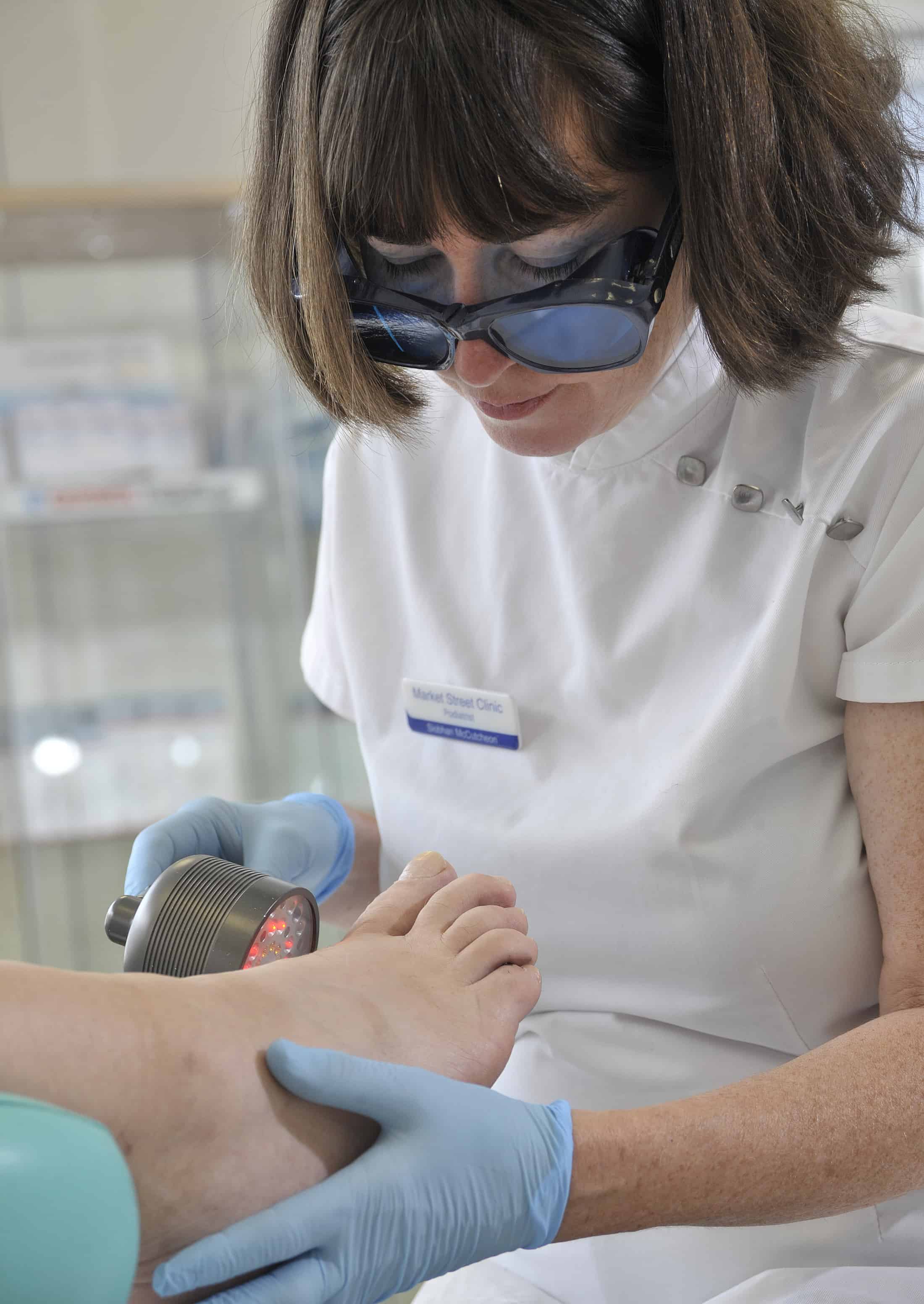
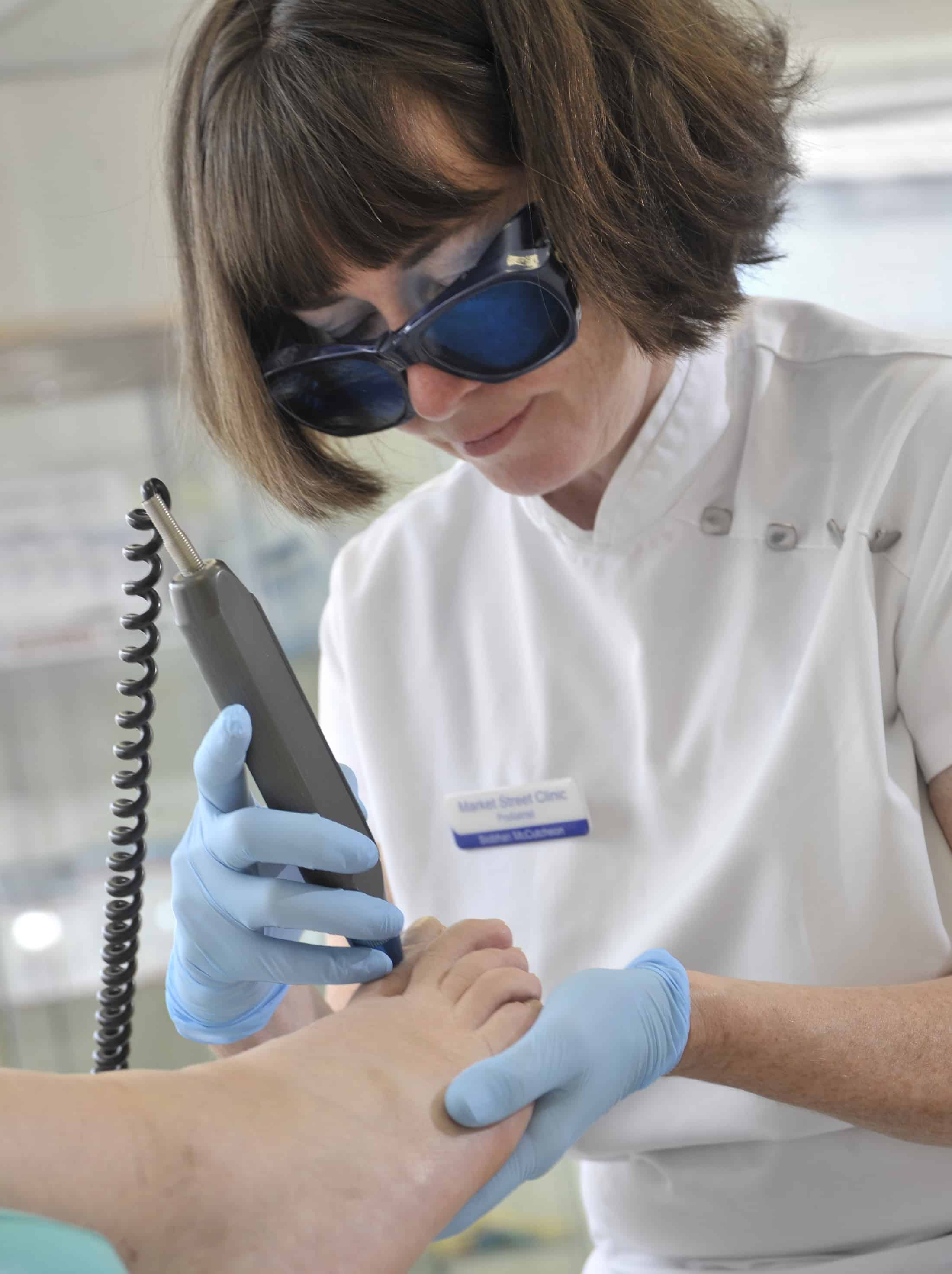
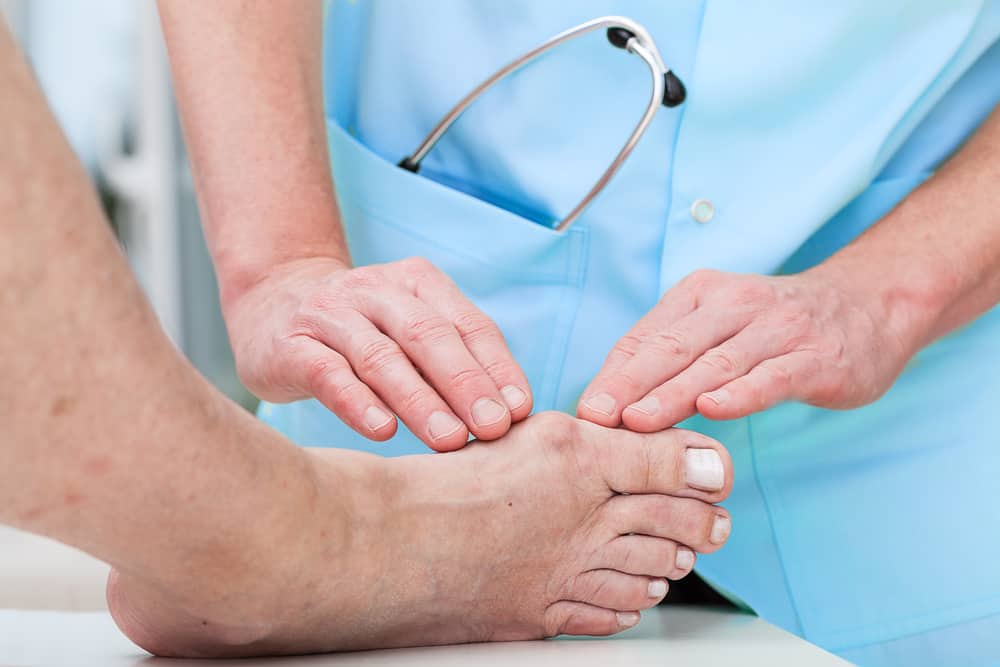
A bunion is a bony deformity at the base and side of the big toe joint. The big toe moves towards the other toes and may also rotate and twist.
Wearing shoes that are too tight may accelerate the development and cause irritation and inflammation around the joint. They are usually hereditary and linked to genetics. Foot injuries and flat feet that pronate also may contribute.
Bunions can also lead to secondary problems, such as hammertoe, corns, calluses, ulcers, bursitis and arthritis.
Many people with bunions suffer from discomfort and pain from the constant irritation, rubbing, and friction of the joint against shoes. The bigger the bunion gets, the more it hurts to walk.
Because they are bony deformities, bunions do not resolve by themselves.
Our objective is minimum invasive treatment initially as this is less hazardous and the patient is less likely to suffer side effects and complications of more invasive methods.
A Podiatrist will remove the corns and calluses gently with a scalpel and can advise on the best form of treatments available which may also include protective padding, orthotics, or splints for night time wear ( this is often recommended for adolescents with bunions, because their bone development may still be adaptable ).
Low Level Laser Therapy is also effective in reducing pain.
In severe cases, where these conservative methods have failed referral to a specialist surgeon may become necessary.
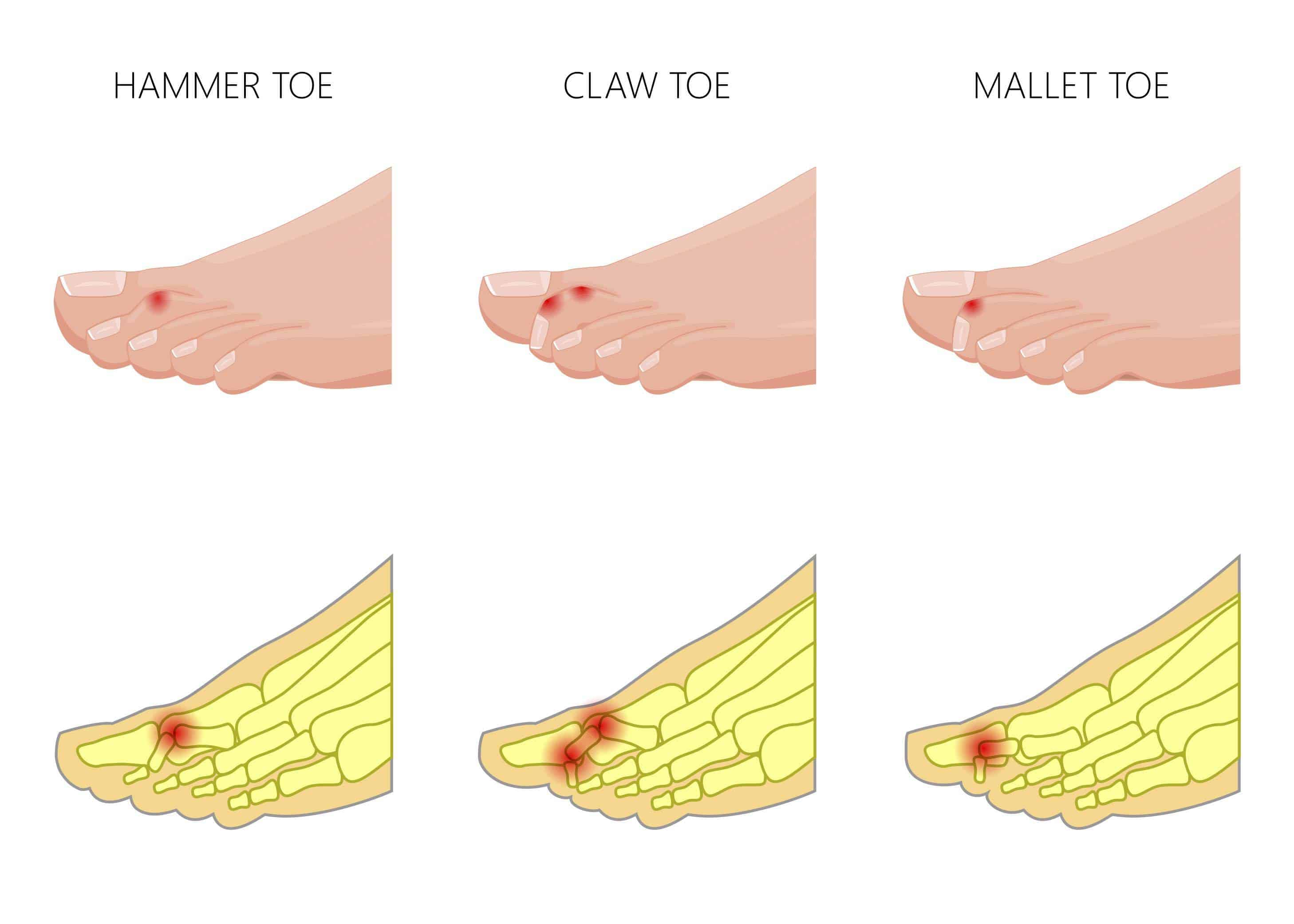
These terms are used to describe deformities that sometimes develop in the lesser or smaller toes. They are common in people with bunions or people who have very flat feet or feet with very high arches.
A hammer toe is when the inter mediate joint of the little toes are bent right over and eventually the joint becomes completely rigid.
A mallet toe affects the distal joint at the end of the toes, if both joints are curled over they are called ‘claw toes’.
All these deformities can cause corns and calluses where the prominent joints rub against the shoes or the ground. In severe cases extreme pressure can cause the affected areas to ulcerate.
Initially we treat this condition conservatively as this is less invasive and the patient is less likely to suffer side effects and complications than with more invasive methods.
A Podiatrist will remove the corns and calluses gently with a scalpel and discuss with you treatments that you may benefit from in the future. Splints can be made to alleviate pressure areas and advice given on appropriate footwear.
A Biomechanical assessment and bespoke Orthotics may also help improve foot function. Low level laser therapy is also good for pain relief.
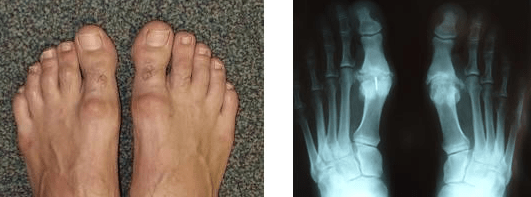
Hallux Limitus/Rigidus (stiffness of the large toe joint )
Commonly refers to osteoarthritis of the big toe joint. The pain and inflammation can completely restrict movement over time. Although not exclusively, this condition is more common in middle-aged men and will often appear in both big toes. As well as having osteoarthritis some people may have a bunion as well. If identified as having both, then in all probability you will be treated for the condition that affects you the most.
An examination will help to determine whether you have Hallux Rigidus. Typical symptoms include restriction of a range of motions of the big toe – there may also be the appearance of bony growths on the top of the toe joint. X-rays will show the extent of the condition and will also help the clinician decide whether surgery is necessary. Other factors will also be taken into consideration including the level of pain, stage of degeneration and the presence of deformity combined with the chance of success against the degree of restriction. A clinician will make an informed decision as to which treatment will be most appropriate for you.
Causes :-
Although hereditary, injuries during activity or systemic problems such as rheumatoid arthritis or gout and infections in the joint may increase the likelihood of it becoming rigid. This joint is particularly subject to wearing out because it is under tremendous stress during walking. With each step, a force equal to twice your body weight passes through this very small joint. Sometimes only the upper part of the joint is affected while the rest of the joint is undamaged. In other people the whole joint is worn out.
Symptoms:-
Pain and stiffness in the joint at the base of the big toe during use (walking, standing, bending, etc.).
Difficulty with certain activities (running, squatting).
Swelling and inflammation around the joint.
Although the condition is degenerative, it can occur in patients who are relatively young particularly active sports people who have at some time suffered trauma to the joint (turf toe). Shaquille O’Neal (NBA star) is a notable example who returned to basketball after surgery.
The most common problem is pain in the big toe joint. In some people the pain is present whenever they walk or even at rest, but in others it only occurs when they turn the big toe up as far as it will go. Stiffness is also a common problem. The ability to turn the big toe upwards is lost, although it can usually be turned downwards. Sometimes it gets so stiff it points downwards and cannot be laid flat on the floor.
An “osteophyte” or “dorsal bunion” may develop on top of the joint and this bump may rub on the shoes. In some people this is their only problem. Because of the painful big toe joint some people tend to walk on the outside of the foot causing pain in the ball of the foot or down its outer border. Sometimes the joint wears down more on the outside, towards the lesser toes than on the inside. This may make the big toe tilt towards the second toe, and the toes may rub together causing corns.
Treatment:-
Initially we find less invasive treatment more preferable if possible and the use of the latest technology to achieve maximum mobility, pain relief, a reduction of swelling and improvement of gait. Low level laser therapy has been shown to be highly effective in treating this condition.
A biomechanical assessment may be necessary which is then used to fabricate custom made orthotics to relieve the pain by redistributing the pressure away from the joints. It may be that a non-surgical management may be the most suitable form of treatment for you – the principle is to take the strain off the big toe during walking. As we walk the front part of the foot acts as a rocker which requires the big toe joint to extend and take the weight. Hence, by modifying a normal shoe to add a subtle rocker to the sole at the location of the joint, the foot can progress forwards normally with reduced big toe movement.
None weight-bearing exercise such as swimming or yoga has also been found to be helpful in relieving symptoms.
For those who have not had any success with less invasive methods, a cortisone injection may be recommended. This may be useful in the early stages of arthritis but the effects can often just be temporary.
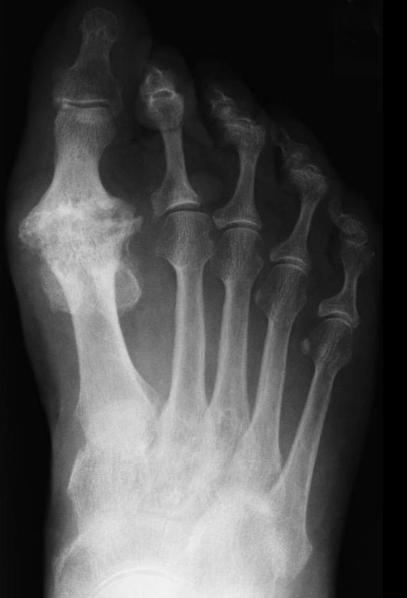
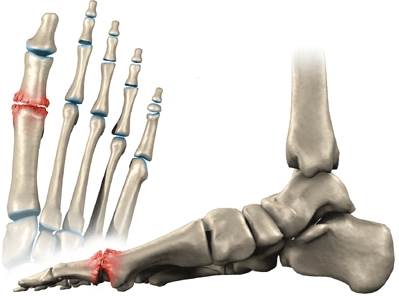

In some cases, surgery is the only way to eliminate or reduce the pain. The type of surgery is based on the stage of degeneration of the big toe joint.
1st Stage
Hallux rigidus involves some loss of range of motion of the big toe joint and is often treated conservatively with prescription foot orthotics.
2nd Stage
This involves greater loss of range of motion and cartilage and may be treated via cheilectomy in which the metatarsal head is reshaped and bone spurs reduced.
3rd Stage
This often involves significant cartilage loss and may be treated by an osteotomy in which cartilage on the first metatarsal head is repositioned and possibly coupled with an implant in which the base of the big toe is resurfaced.
4th Stage
Hallux rigidus, also known as end stage hallux rigidus involves severe loss of range of motion of the big toe joint and cartilage loss. This may be treated by fusion of the joint- arthrodesis or implant arthroplasty in which both sides of the joint are resurfaced or a hinged implant is used. Fusion of the joint is often viewed as more definitive but may lead to significant alteration of gait causing postural symptomatology. The implants termed “two part unconstrained” implants in which a “ball” type device is placed on the first metatarsal head and socket portion on the base of the big toe do not have a good long term track record. The hinged implants have been in existence since the 1970s, have been continually improved and have the best record of improving long term function.
The good news is that a gradual return to full function usually happens for most patients.